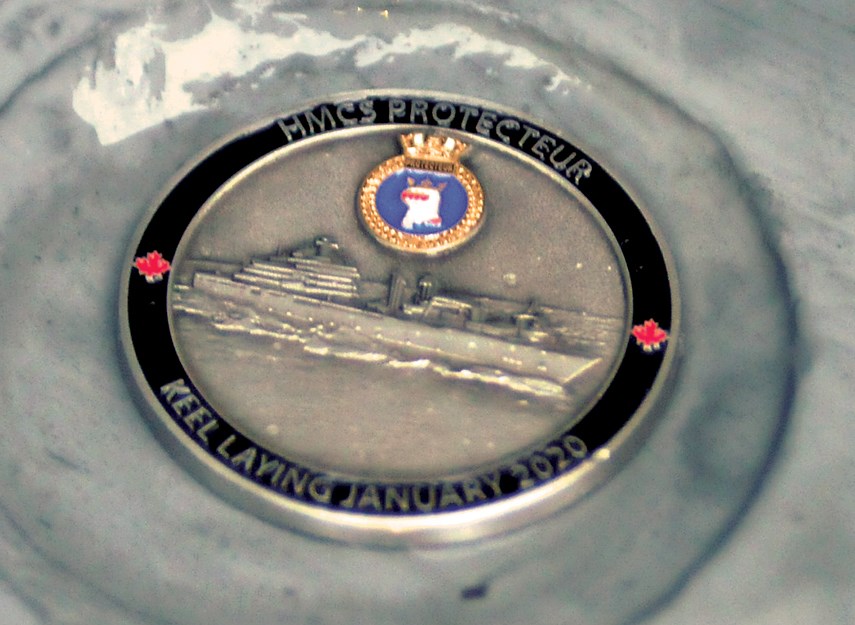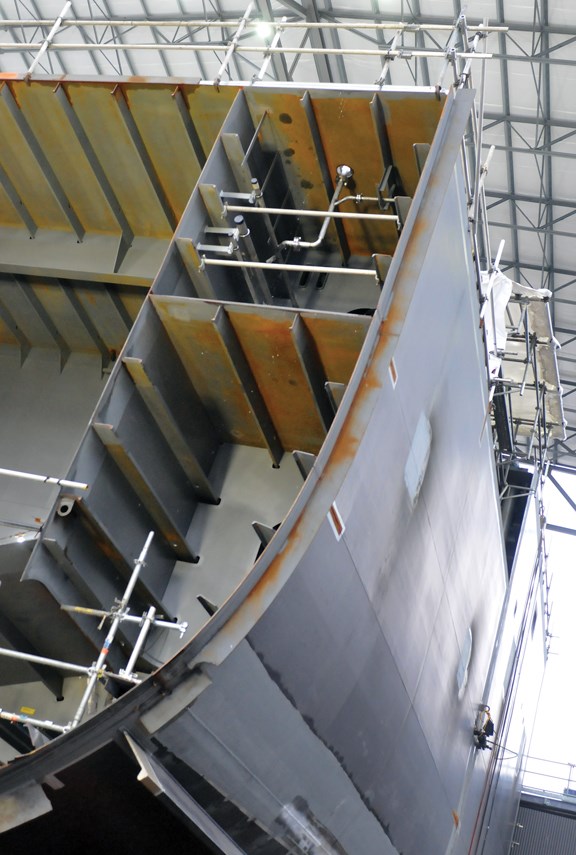Seaspan marked a milestone in its early work on the first joint support ship being built in the North Vancouver shipyard Thursday with a keel-laying ceremony.
In front of one of the huge “grand blocks” which will one day form a piece of the ship, Vice-Admiral Art McDonald, commander of the Royal Canadian Navy, joined Seaspan CEO Mark Lamarre and North Vancouver MP Jonathan Wilkinson for the ceremonial event.
Longtime Seaspan worker Jeff Smith placed a newly minted coin in the keel, traditionally meant to bring good luck to both those building the ship and those who serve on her.
Seaspan began work on the massive blocks that will eventually make up the hull of the first joint support ship in June 2018.
The grand block forming the backdrop for Thursday’s ceremony is one of three that have been assembled at the shipyard since November. A fourth grand block – formed by joining four large blocks together making up over 160 tonnes of steel – is now being assembled.
When built, the joint support ship, the HMCS Protecteur, will be the longest naval ship built in Canada, with a length of 173.7 metres and a breadth of 24 metres.
The ship – one of two joint support ships being built at the shipyard – is scheduled for delivery in 2023.
The ships will provide support – including carrying fuel, spare parts and medical supplies – to Canadian warships.
The support ships are an “extremely important piece of the navy’s future fleet,” Wilkinson told the crowd of shipyard workers gathered to mark the occasion. “We know all too well how sudden crisis and conflict can come at a moment’s notice.”

The navy has been without a permanent support ship since 2015, when it was forced to retire its existing vessels because of a fire and corrosion issues. It is currently leasing a temporary ship, the MV Asterix, built by Davie shipyard in Quebec.
The current budget for the two joint support ships is a combined $3.4 billion. Final details of the full construction contract haven’t been confirmed yet.
Seaspan signed a $66.6-million contract in 2018 for construction of the 50 early blocks.
The keel-laying for the joint support ship comes just a month after the federal government took delivery of the second offshore fisheries vessel, the Jacques Cartier, built by Seaspan for the Coast Guard. A third fisheries ship is still under construction.
Construction of the first two fisheries vessels was marred by delays and budget overruns that had to be borne by Seaspan. But both Wilkinson and Lamarre said Thursday the shipyard and the government have learned from those early problems and worked to improve efficiency.
“There were obviously some challenges getting going. That’s not unusual in the context of starting up, essentially, a shipbuilding operation from ground zero,” said Wilkinson. “So some delays and some budgetary issues, I think, are to be expected.”
Lamarre said the national shipbuilding program “is succeeding in its goal of building shipbuilding capacity on the West Coast.”
There are currently 1,300 people working at the shipyard. That number could grow when Seaspan moves into full production on the ships.




